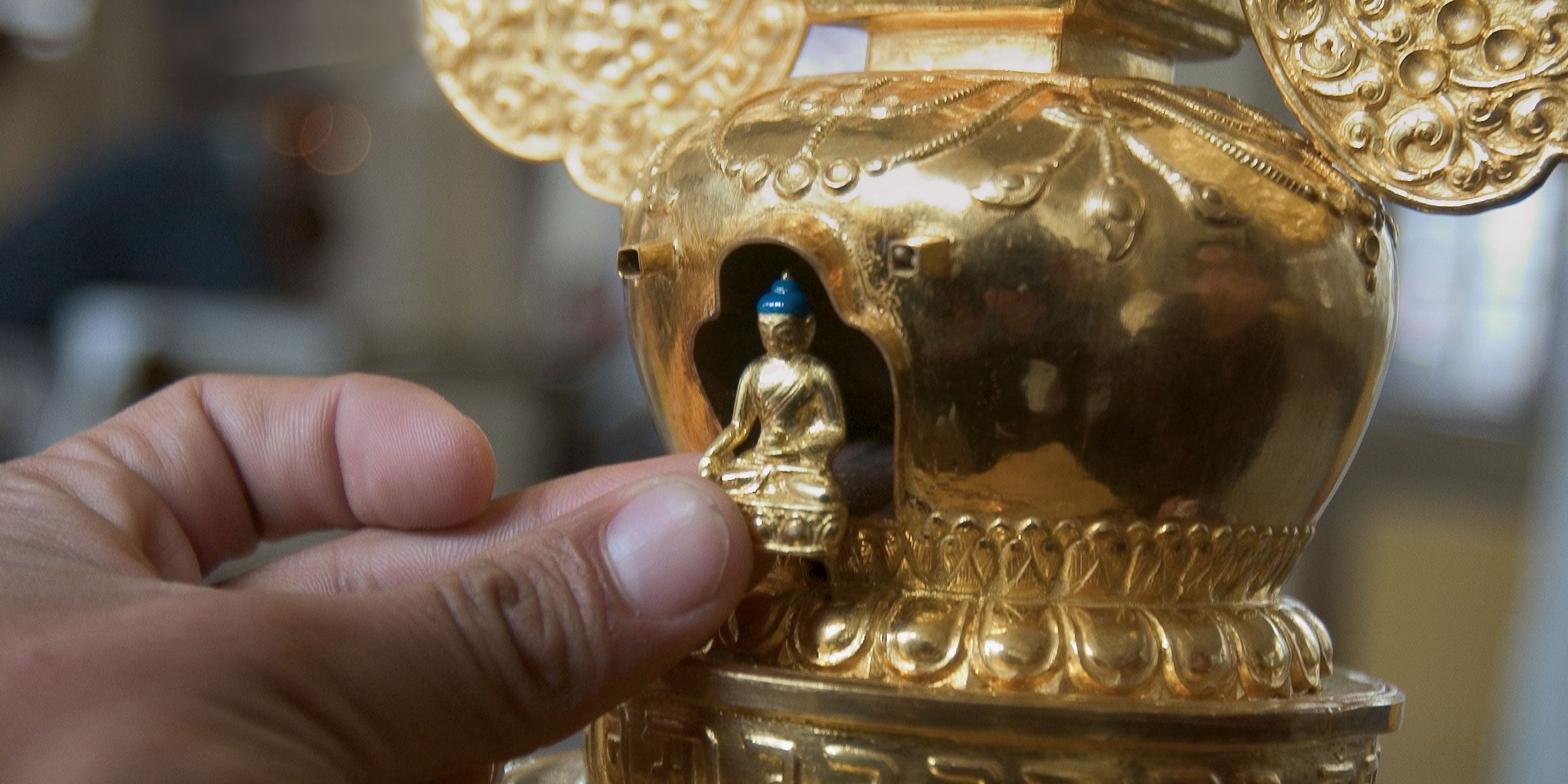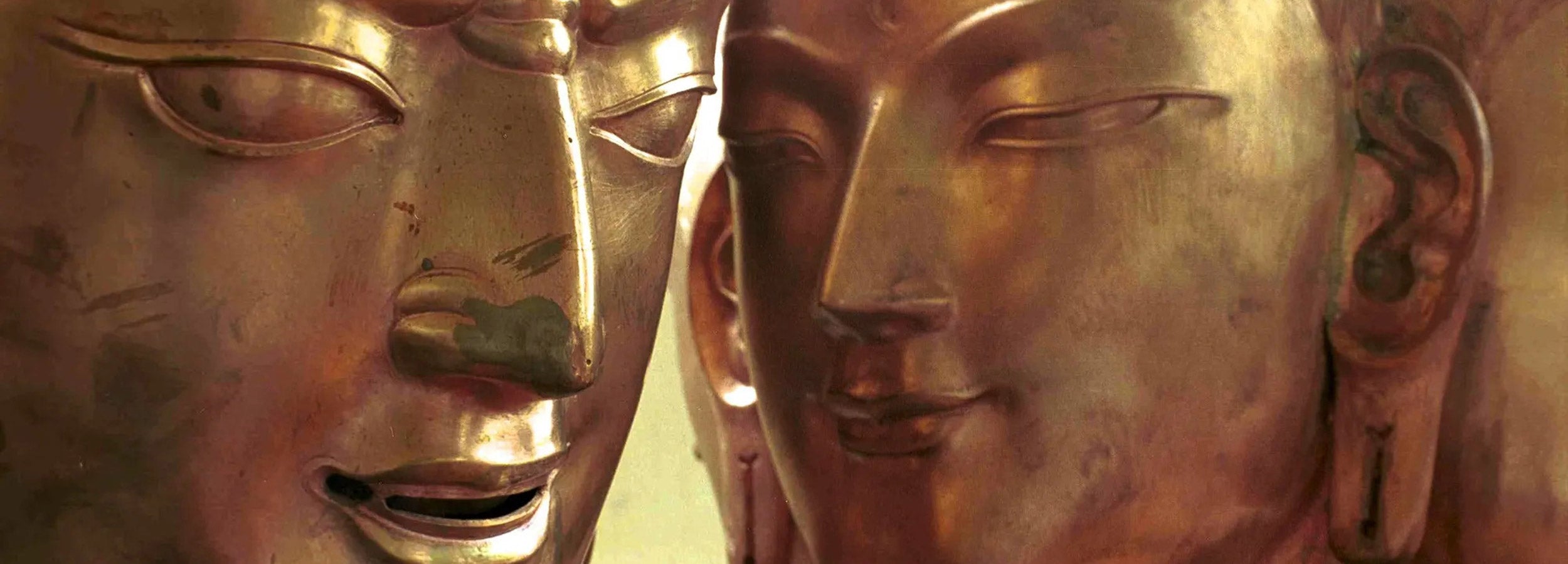Metal Sculpture
In the seventh century, the king of Tibet, Songtsen Gampo, credited with firmly establishing Buddhism in Tibet, married two Buddhist princesses from Nepal and China, who each brought with her a precious statue of the Buddha. To house these two statues, the first two temples were commissioned in Lhasa, elaborate undertakings that required skilled masters of many different crafts. As Tibet had never attempted constructions of this magnitude and grandeur before, artists were brought from India and Nepal to assist. Incidentally, this project laid the foundation for the artistic traditions of Tibet, which later generations would embellish upon, developing a uniquely Tibetan style.
Two materials became common in Tibetan statue making: clay and metal. Here at Norbulingka, we work solely with metal, following the tradition passed down to us by our late master Pemba Dorjee. To make larger statues, sheets of copper are hammered on anvils into the shapes of different body parts. When all the parts have been wrought, the statue is then assembled. To create the exquisite detail required for areas such as facial features and folds in clothing, the copper sheets are worked from both sides, allowing the artist the ability to fashion completely life-like forms.
Just as with other sacred arts, statues are created according to the proportions of deities as they are laid out in scripture, so they may be used as proper objects of meditation. The training of a statue-making artist is much lengthier than that of a thangka artist because not only must a statue-maker learn the proportions of deities in two dimensions, he must master the additional proportions of depth. At Norbulingka, this training course lasts for seven years.
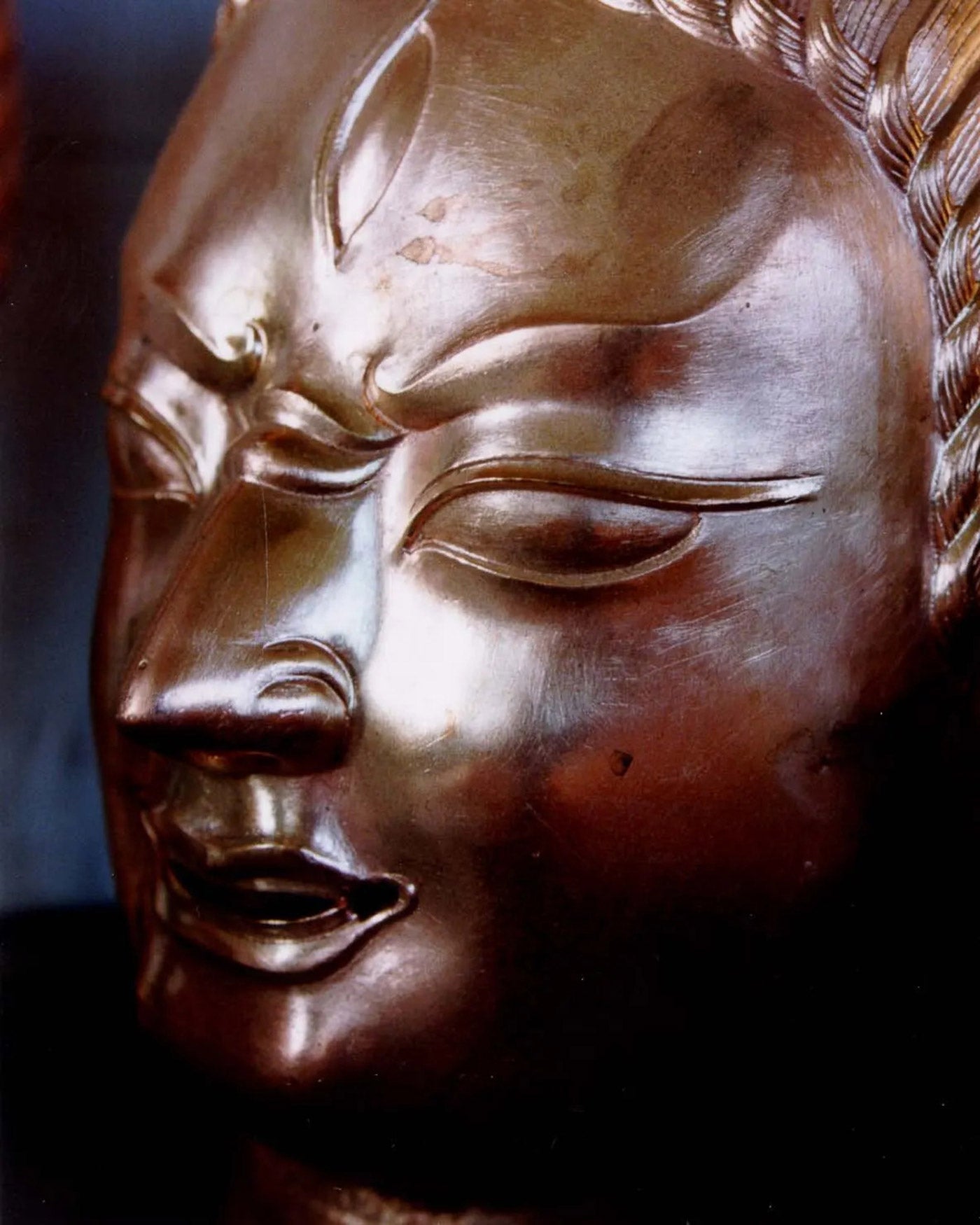

Smaller statues are created using a sand casting process. Initially, a model of the statue to be cast is created out of clay. A mold is then made of this model using a mixture of sand and sugarcane. The mold is then filled with molten copper and let to dry. The clay model can be used many times, but a new mold must be created for each new statue. In this way, because the mold imprints a little differently each time, even each casted statue seems to have a unique expression.
After the statue is completed, it undergoes a meticulous finishing process. It is either polished to a shine or gilded, a process that involves a mixture of gold leaf and mercury melted together to form a paste. This paste, with its silver color, is then evenly applied to the statue. The mercury is subsequently burned off with a flame, leaving only the gold affixed to the statue. This process often requires multiple coats to achieve an even finish, showcasing the painstaking craftsmanship involved in creating a Tibetan statue.
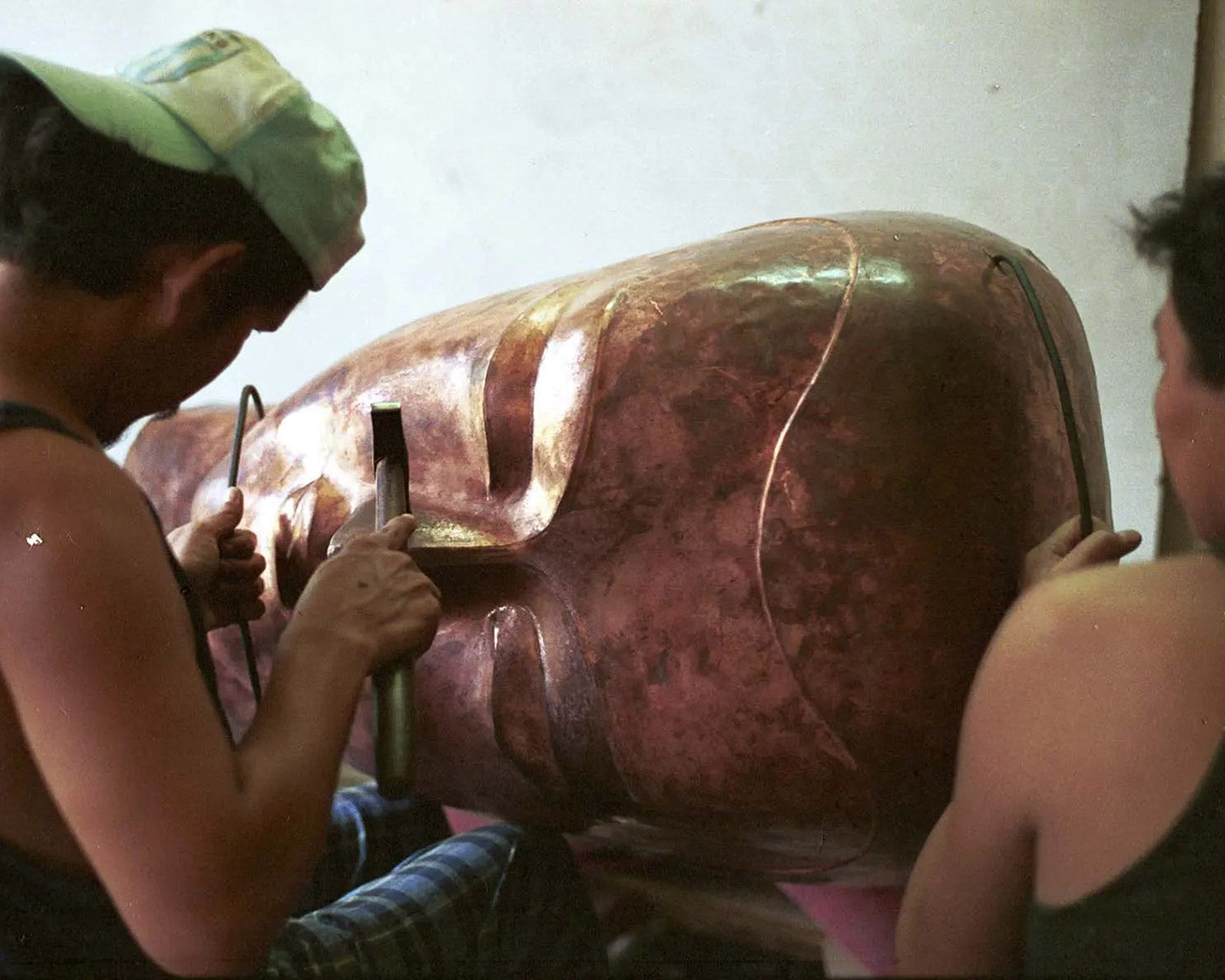
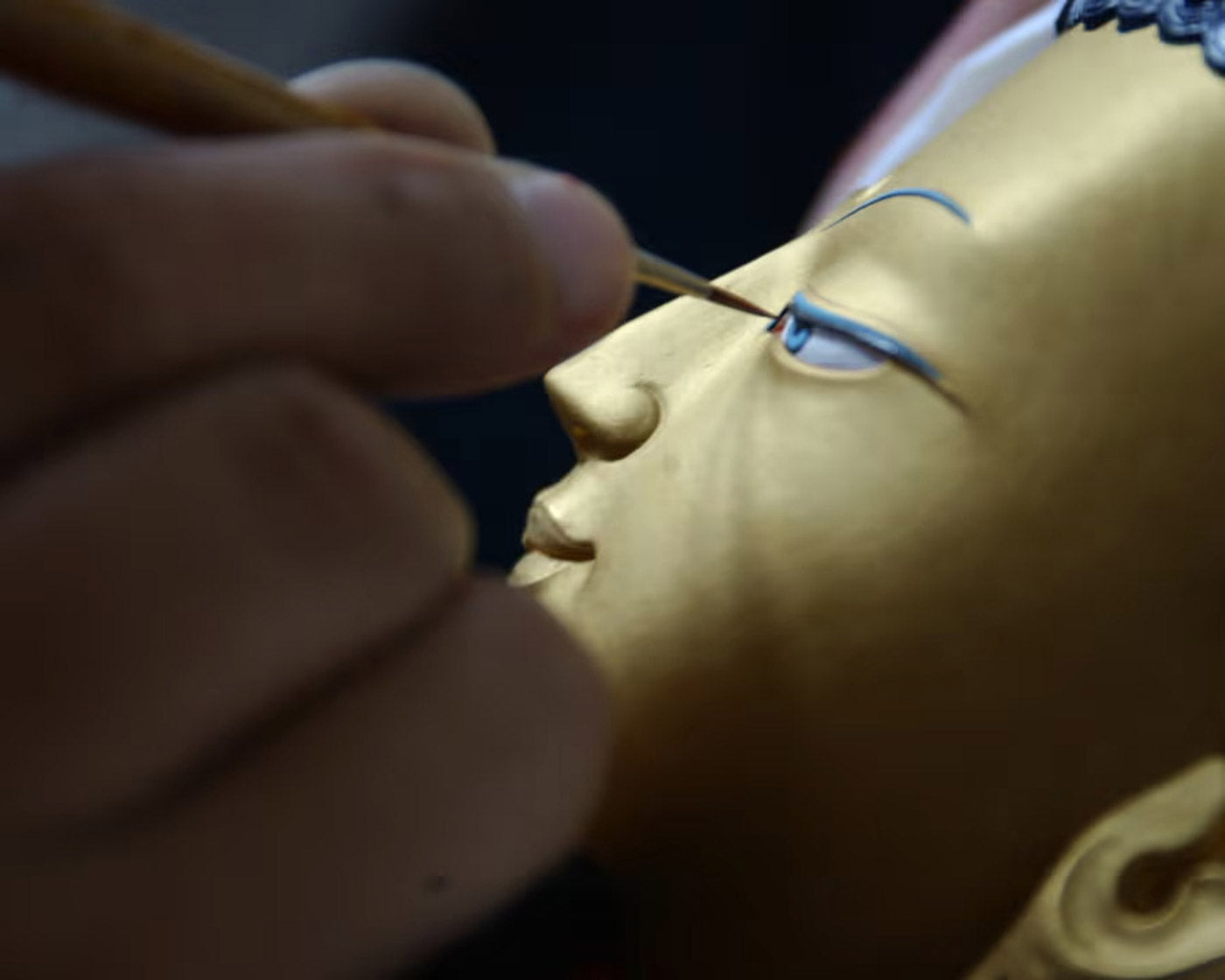
For the faces, cold gold paint is used, which has a matte look and reflects light in a different way than gilding, similar to how skin does. The statue is then transferred to our thangka painting section, where thangka artists add the finishing touches to the face, giving the statue personality.
Buddhists believe that a statue only truly comes to life when it is consecrated by a lama through an appropriate ritual. During this ceremony, the statue is filled with many offerings, relics, and rolled mantras, which are then sealed inside the statue, imbuing it with a special power to grant blessings to those who pray. As a statue or other work of religious art ages, these powers of blessing increase as it becomes suffused with the accumulated energy of the people who pray to it or use it as an aid for visualization. Our aim here at Norbulingka is to create new works of craftsmanship worthy of carrying great blessing, to be treasured and passed down for generations as sacred heirlooms.
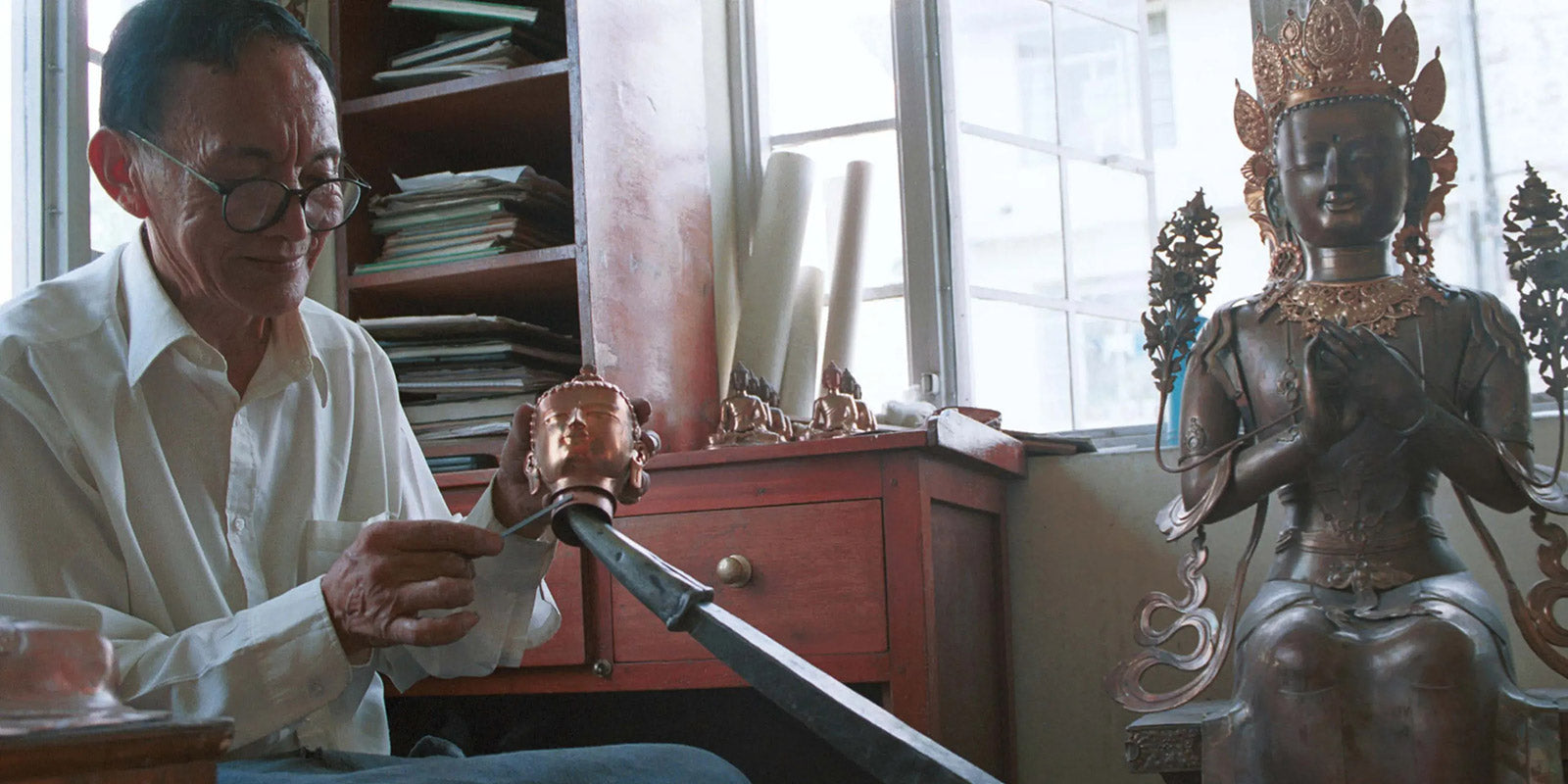
Our Masters
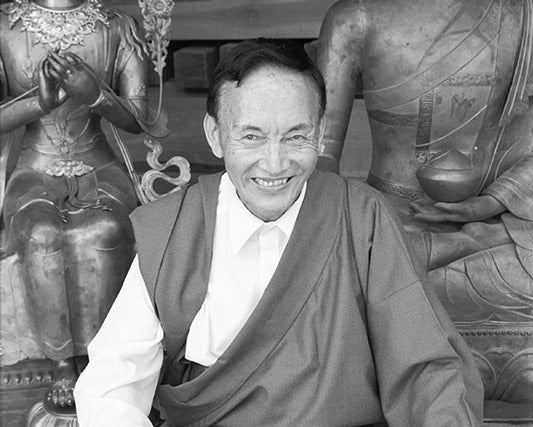
Pemba Dorjee, Late Master
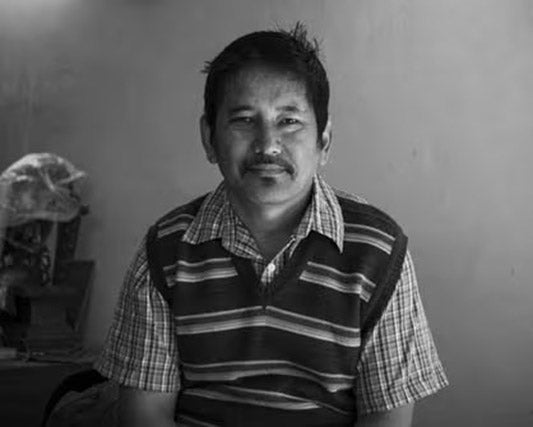
Tseten Dhondup, Statue-Making Master




